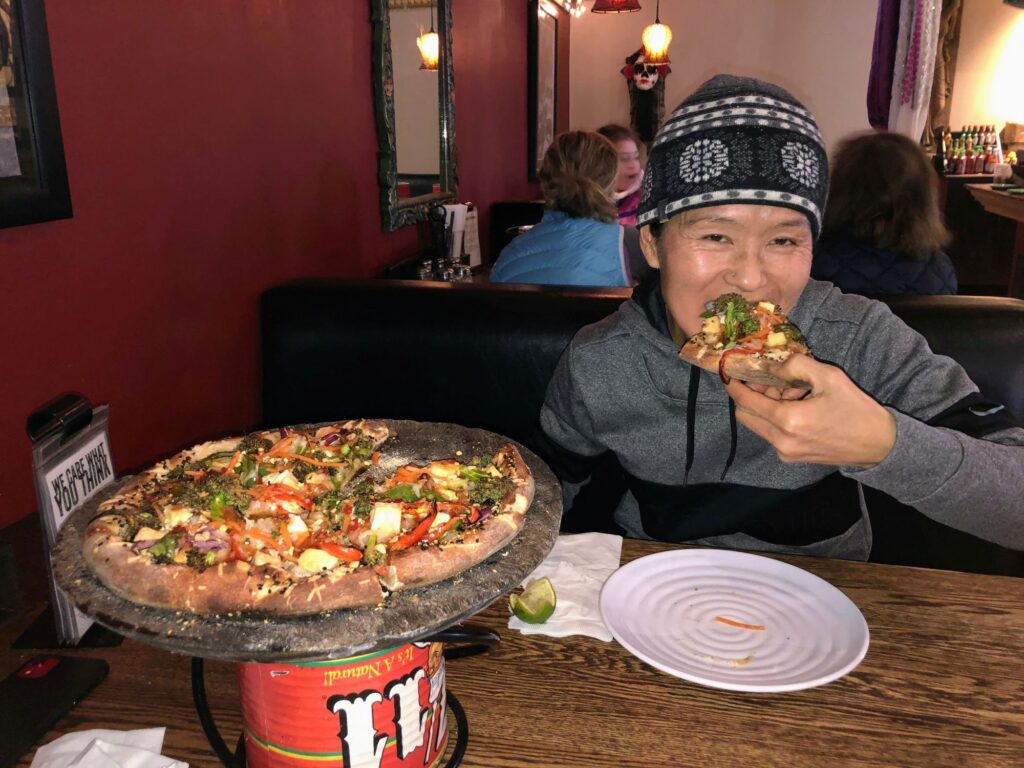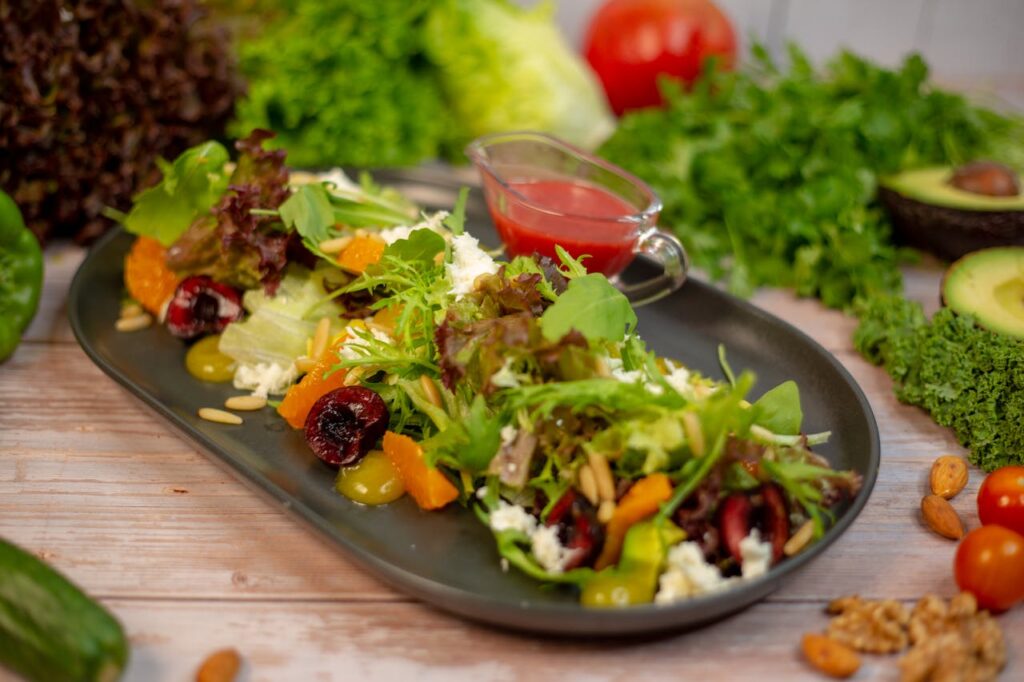Eating healthy sounds simple—just choose better foods, right? But the challenges of eating healthy are real. Between packed schedules, tempting snacks, and confusing food labels, sticking to healthy choices isn’t always easy. In this post, I’ll share some common struggles and how to deal with them.
Why Eating Healthy Feels So Hard Sometimes
Most of us want to make better food choices, but the challenges of eating healthy run deeper than just knowing what’s good for us. It’s not only about what to eat—it’s all the other factors that get in the way.
For many, habits begin in childhood. If you grew up on sugary drinks, processed snacks, or meat-heavy meals, it can take time to shift your mindset and preferences. Even when we try to make better decisions, comfort foods often win.
There’s also an emotional side. We eat when we’re bored, stressed, or sad. These patterns can overpower even our strongest intentions. So much of healthy eating isn’t about willpower—it’s about rewiring how we relate to food.
To make it more confusing, we’re flooded with mixed messages every day. Carbs are bad. Then it’s fat. Then it’s fruit. These changing trends only add to the challenges of eating healthy, leaving us overwhelmed and unsure.
Truth is, it takes more than information to eat well consistently. It takes unlearning, noticing triggers, and shutting out the noise. Once we understand what’s really holding us back, we can start making meaningful changes.
The Challenges of Eating Healthy at Home

Home should be the easiest place to eat well, but for many of us, it’s the hardest. The fridge is full, the pantry is stocked, and temptations are everywhere. These everyday situations are some of the most overlooked challenges of eating healthy.
One big hurdle is cooking for others. If your partner or kids prefer fried foods, meat-heavy dishes, or sugary snacks, it’s hard to stay on track. You might end up making two meals—or giving in just to avoid conflict.
Convenience is another issue. Processed foods are quick, familiar, and require no prep. After a long day, chopping veggies or cooking from scratch can feel like too much effort.
Then there’s your kitchen setup. When cookies, chips, or soda are within reach, resisting them takes extra willpower. That’s why what you keep in your home matters more than you think.
Eating Healthy on the Go
Sticking to nutritious choices while you’re out and about is one of the most common challenges of eating healthy. Whether you’re running errands, working long hours, or traveling, it’s easy to grab what’s quick—even if it’s not the best option.
Fast food and vending machines are everywhere. They’re convenient and cheap, but rarely nourishing. Even items that seem like better choices, such as wraps or smoothies, are often loaded with sugar, sodium, or processed ingredients.
What helps the most is planning ahead. I like to carry simple snacks—things like nuts, fresh fruit, or homemade energy bars. A reusable water bottle also helps me avoid buying sugary drinks.
Another habit that works is checking restaurant menus in advance. It keeps me from making rushed decisions when I’m already hungry. If I’m traveling, I’ll pack something easy or look up nearby places that serve wholesome meals.
Eating well while on the move does take effort, but it prevents that sluggish or regretful feeling later. A little prep goes a long way in keeping you on track.
Dining Out Without Derailing Your Goals

Going out to eat can feel like a treat, but it’s also where many people struggle the most. Dining out is one of the common challenges of eating healthy, especially when you’re trying to stay consistent.
Portions tend to be oversized, and meals often come with hidden ingredients. Even a basic salad can sneak in fried toppings, creamy dressings, or added sugar. It’s not just about what you choose—but how it’s prepared.
Then there’s the social side. When others are ordering fries, drinks, or dessert, it’s hard to say no without feeling awkward or left out.
What helps me is having a few go-to habits. I check the menu in advance, ask for sauces on the side, and usually skip the breadbasket. If the serving is large, I save half for later without hesitation.
Eating out doesn’t have to throw off your progress. Being mindful and making small adjustments can help you stay on track—without giving up the joy of a shared meal.
Budget-Friendly Healthy Eating
One of the biggest myths is that eating well has to be expensive. But for many people, the cost is one of the perceived challenges of eating healthy—especially with rising grocery prices.
The best way to save is by planning ahead. When you know what you’re cooking, you’re less likely to overspend or waste food. I often build meals around simple staples like oats, brown rice, beans, lentils, and frozen vegetables—they’re filling, nutritious, and affordable.
Buying in bulk can stretch your budget, especially for things like grains, nuts, and seeds. I also avoid paying more for pre-cut produce or bagged salads, which are convenient but not cost-effective.
Seasonal fruits and veggies are another smart choice. They’re usually fresher, tastier, and cheaper. Farmers markets can be a great place to find deals if you know what to look for.
The key is choosing whole foods over processed ones. They offer more nutrients, better value, and often taste better too.
How I Overcame My Own Struggles with Eating Healthy

I didn’t always eat the way I do now. There was a time when I relied on fast food, sugary snacks, and anything quick after a long day. I told myself I was too busy, too tired, or just didn’t feel like cooking.
The turning point came when I noticed how sluggish I felt—both physically and mentally. I began paying attention to how food affected my energy and mood. That awareness made all the difference.
I didn’t change everything at once. To ease into it, I tried simple recipes and explored plant-based meals that actually tasted good. Keeping healthy snacks nearby and clearing out tempting foods from my pantry also made a big difference.
The challenges of eating healthy didn’t magically disappear. But what helped most was staying consistent. If I had a bad day, I didn’t give up. I just made a better choice at the next meal. Over time, those small steps added up.
Even now, it still takes effort—especially when I travel. But it doesn’t feel like a burden anymore. It’s a decision I want to make because of how much better I feel.
Final Thoughts
The challenges of eating healthy are real—and they show up in everyday life. From busy schedules and social pressure to emotional habits and confusing food choices, it’s no wonder so many of us struggle.
But you’re not alone. Just recognizing these obstacles is a big step forward. It’s okay if it takes time. What matters is that you’re trying.
Give yourself grace. Keep learning what works for you. And remember, it’s not about being perfect—it’s about doing your best.














